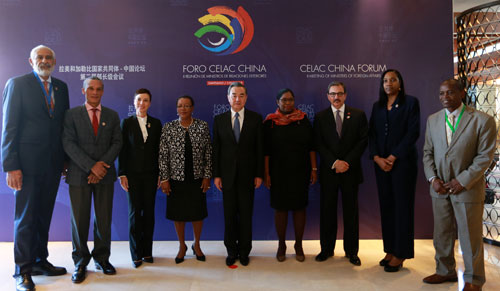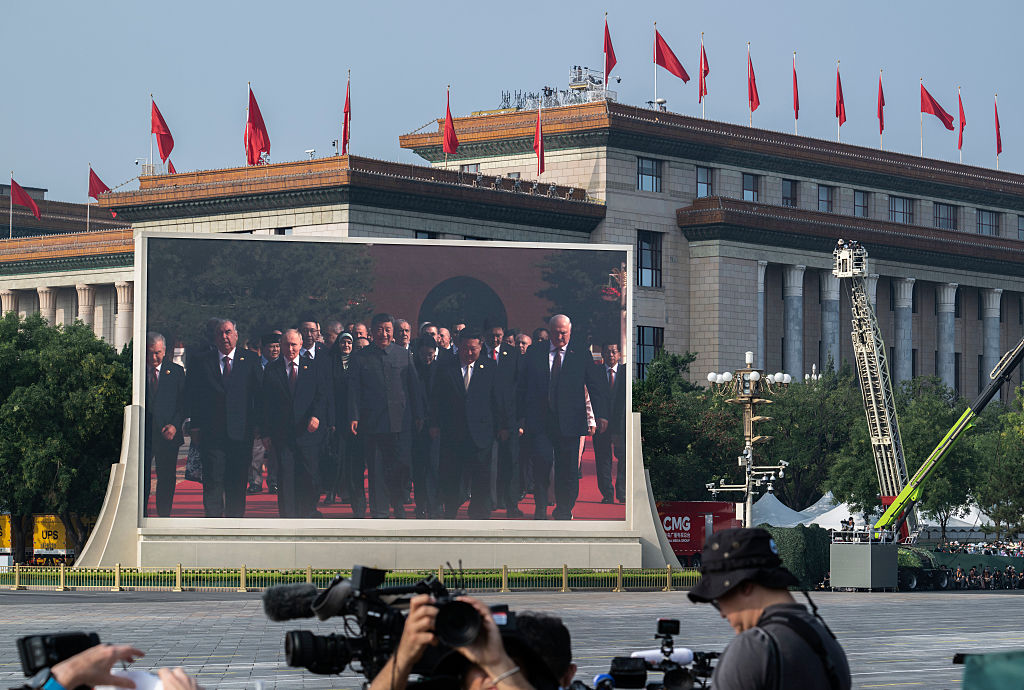
The PRC Bets on Climate Diplomacy in the Caribbean
The PRC Bets on Climate Diplomacy in the Caribbean
Climate change has become a central battleground in the PRC’s bid to brand itself as a leading partner and spokesman for the developing world. Beijing has earmarked billions to fund initiatives aimed at reducing carbon, supporting green energy, and promoting climate change resilience across the globe in places like Sri Lanka, Ghana, and Egypt. The investments add substance to Xi Jinping’s pledge at the 19th Chinese Communist Party (CCP) Congress in 2018 that China was “taking a driving seat in international cooperation to respond to climate change” and become “an important participant, contributor, and torchbearer in the global endeavor for an ecological civilization” (Xinhua, November 11 2017).
The PRC’s push for green diplomacy has spread along its Maritime Silk Road to its partners in the Caribbean, where the effects of climate change are not predictions but concrete realities — dying coral reefs, depleted fish populations, and intensifying tropical storms have hit the region hard. Small island developing states (SIDS) like Jamaica, Dominica, Barbuda & Antigua, and the Bahamas are considered the most vulnerable to climate change effects due to limited government fiscal flexibility, low income levels, and substantial industries and populations below sea-level.
The PRC has stepped up its efforts in the region, becoming an unlikely environmental advocate, using the issue to challenge American hegemony along its “Third Border.” China has tailored its aid to meet the growing chorus of Caribbean leaders who are castigating international powers for inaction. Roosevelt Skeritt, the Prime Minister of hurricane ravaged Dominica, implored world leaders at the 2017 UN General Assembly that the time for inaction had passed, saying “Eden is broken,” and that the region’s future is gloomy (Dominica News Online, September 23 2017). Is Beijing simply “delighted to support rebuilding paradise,” as China’s ambassador to Antigua & Barbuda recently said (China Dialogue, April 16), or is China’s green diplomacy something more?
Showing Up Where the US Doesn’t
High level government meetings have become spaces for the PRC to show it takes seriously the concerns of Caribbean leaders. At this year’s China-CELAC Forum, a space for PRC leaders to engage directly with leaders across Latin America and the Caribbean, Foreign Minister Wang Yi met with Foreign Ministers of Barbados, Guyana, Jamaica and Trinidad and pledged to help Caribbean nations meet the joint problems of climate change (PRC Foreign Ministry, January 22). The PRC also agreed to open a China-LAC Joint Laboratory of Clean Energy and Climate Change, and China Joint Research Center of Agricultural Science and Technology aimed at promoting renewable energy technology, ecosystem management and better coordinate disaster relief responses (Ministry of Foreign Affairs, April 2016). In September, 2017 Foreign Minister Wang similarly assured CARICOM leaders the importance China attaches to the region’s “concerns and legitimate needs regarding climate change” and would push developed nations to meet their environmental commitments of the Paris Agreement (Xinhua, August 23).
Regional Caribbean leaders have said they see PRC engagement as needed in the wake of US withdrawal from the region. Gaston Browne, the Prime Minister of Antigua & Barbuda, said that PRC aid filled a void left by Washington, “[The people in Washington] treat us with benign neglect. I guarantee the US did not give us $100,000 after Irma.” (reliefweb, June 28). Key organizations in the region that have depended heavily on US funding are facing down budget cuts. For example, the Caribbean Community Climate Change Centre, a leading regional organization for research on climate change, was promised $25 million in the final year of the Obama administration. The first year’s disbursement was made, but according to the organization, the Trump administration withdrew the funding for subsequent years. According to one representative of the organization, the change had been expected after the US pulled out of the Paris Agreement on June 1, 2017 (Breaking Belize News, July 9).
Consistent with PRC aid elsewhere across the world, its green initiatives in the Caribbean take the form of funding, technical aid and complete projects, in both international and bilateral fora. In 2014, the PRC announced a $3.1 billion donation to the UNDP to help fight climate change in the name of South-to-South cooperation. A South-to-South Cooperation Fund has been working on the ground with the UNDP and local organizations to find suitable projects (UN Development Programme, November 15 2017) [1].
In Dominica, the PRC recently agreed to build a multi-million dollar hospital that would be “climate resilient with concrete roofs and storm proof windows,” after the island’s only major hospital was rendered non-operational during the worst of Irma (St. Lucia News, October 19). In the Bahamas, the PRC signed an agreement in May 2018 to provide the small island with badly needed housing that is “resistant to climate change, improves energy efficiencies of building through solar energy, and decreases the greenhouse gas emissions” (The Bahamas Weekly, May 15). In Barbuda & Antigua, the Antigua and Barbuda China-Aid Post Disaster-Roof Restoration Project rebuilt roofs and houses for those lost during Hurricane Maria. Even the PRC’s new embassies in the region, such as one recently opened in Trinidad, embrace green technologies to maximize efficiency (Stabrock News, November 2). These projects—both completed and proposed—are consistent with the PRC’s emphasis on small manageable programs that can have an immediate positive effect.
Technical training is also a centerpiece. In Jamaica, the PRC recently agreed to train 140 young Jamaicans to install and repair solar panels, donated by the PRC in 2016, aimed to harness the island’s ample sunshine as a green approach to overcome expensive energy costs. A group of Jamaican scientists and media members were recently invited to a conference funded and hosted by Nanjing University, that included training seminars (Panos Caribbean, May 12 2017). The PRC embassy in Kingston emphasized that the gestures flowed from a desire “to support its friends in coping with climate change, especially friends like Jamaica, who are very sensitive to climate change” (The Gleaner, April 12). However, the PRC’s track record on climate change has given mixed signals on the sincerity of this commitment and whether it is ready, or able, to push global change.
Climate Diplomacy: A Drop in a Rising Ocean?
PRC climate change-centered aid in the Caribbean is pragmatic and takes into consideration the concerns of the host countries. As Caribbean leaders have spoke out more vociferously in favor of international action, the PRC has tried to project the image of a “responsible power” (负责人大国), a leader of the Third World that takes the concerns of small nations seriously. It also shows the ability for SIDS to have influence in otherwise asymmetrical relationships. Green energy and climate resilient housing may help SIDS withstand some of the most immediate dangers, but without further change, is only a band-aid without the global cooperation of the biggest carbon producers like the PRC and the US.
Domestically, Xi Jinping has declared a war on pollution, and from 2013-2016, the PRC consistently managed to cut its total coal consumption. However, in 2017, the number began to climb again, increasing by 3.5% (Brookings, January 22). Some observers have accused Beijing of propping up companies hurt by a downturn in fossil fuel use at home by sending them abroad, exporting pollution along its BRI. The PRC continues to invest heavily in fossil fuel industries abroad, building 240 coal power plants across 25 nations by the end of 2016 (Global Environmental Institute, May 2017). Similarly, although Beijing is the largest global investor in renewable energy in the world, it also consumes the most fossil fuels.
However, fossil fuels remain the cheapest form of electric generation, making it an attractive option for cash-strapped developing nations. A consistent principle of PRC foreign aid since the Mao Zedong-era (1949-1976) has been to build projects based on the host country’s views of its concrete circumstances, including a willingness to base projects on local requests. But if the PRC hopes to head off what seems like an increasingly inevitable fate for its Caribbean partners, it will need to begin taking more seriously the impacts of its global carbon footprint.
Conclusion
Xi Jinping’s latest words at a meeting of emerging economies and developing nations that the Paris Agreement is having difficulties due to the fact that, “some countries have become inward-looking” was a less than subtle jab at the US, who withdrew from the agreement on June 1, 2017. However, China’s willingness to maintain the agreement from Paris is less a challenge to America’s international leadership than a tacit recognition that the current system can be beneficial to its continued rise. It’s more consistent with China’s behavior as a superpower that acts selectively to promote its national interests— not a desire to remake the world in its image.
Washington’s growing rigidity in denying the need for action on climate change— rhetorically and financially — threatens America’s ability to wage influence and keep rival powers from strategic spaces so geographically near. The Caribbean continues to house key shipping and military installments for America, and a unique space as a buffer between America and hostile powers. China’s green diplomacy is happening in concert with larger projects across the region — infrastructure in Panama, the Bahamas, and Jamaica that will continue to give Chinese companies a bigger stake in the economy of the Western Hemisphere. While Washington officials finger wag that China’s money comes with strings attached, without viable alternatives that take seriously local concerns, China’s influence will continue to grow.
Jared Ward is a Ph.D. Candidate and Associate Lecturer at the University of Akron in the Department of History. His dissertation and research focuses on China’s foreign relations with the Caribbean during the Cold War.
Notes
[1] In 2010 China signed an agreement with the UNDP to work together for “South-to-South Cooperation.” (UN Development Programme). The South-South Cooperation Assistance Fund is implemented by the UNDP on the ground and the resident PRC ambassador is usually at all of the projects “ribbon-cutting,” etc. (UN Development Programme, January 26). But the funding comes from Chinese donation — China donated 3.1 billion USD in 2014 to the South-South Climate Change Fund through 2030.


